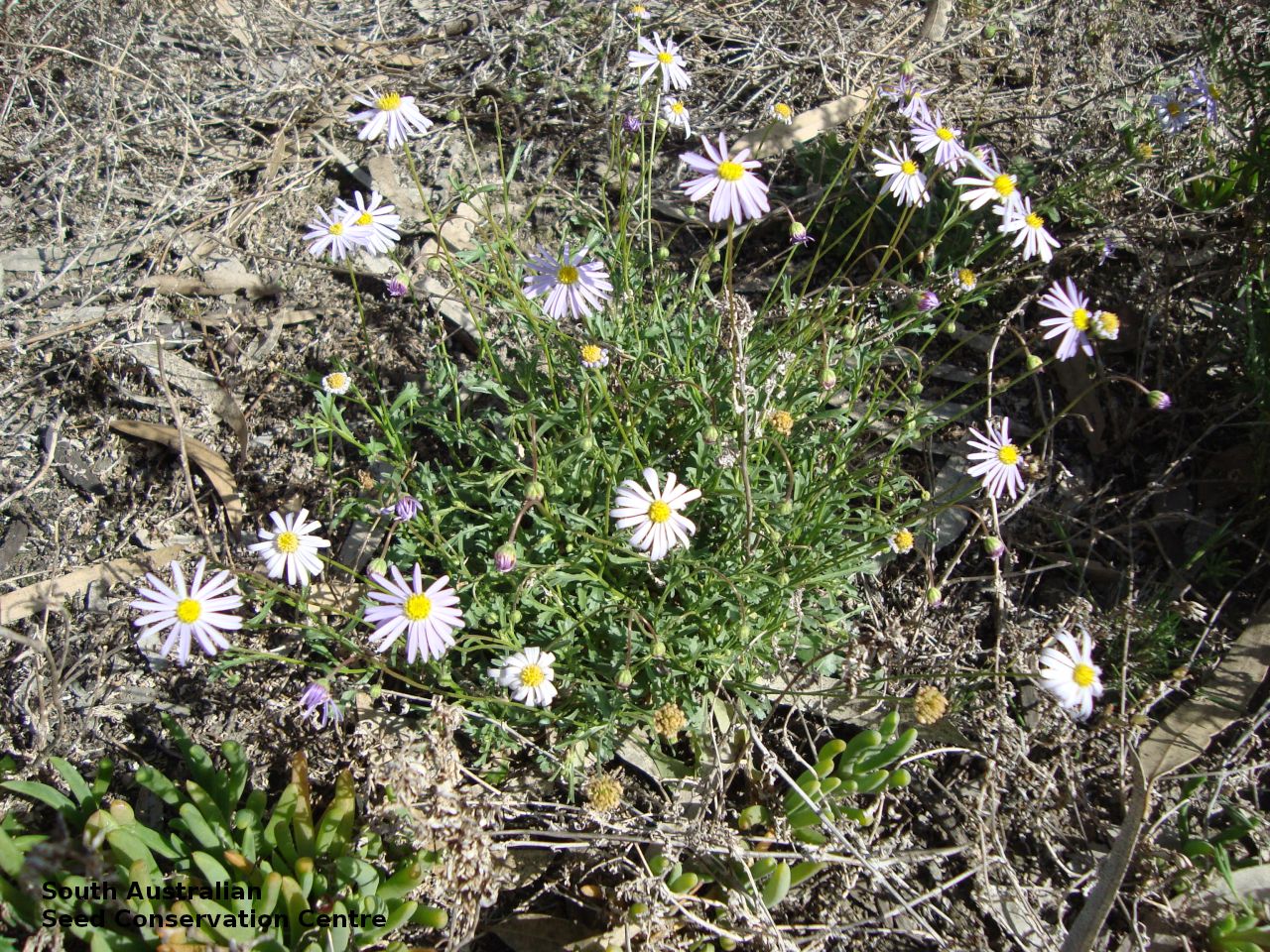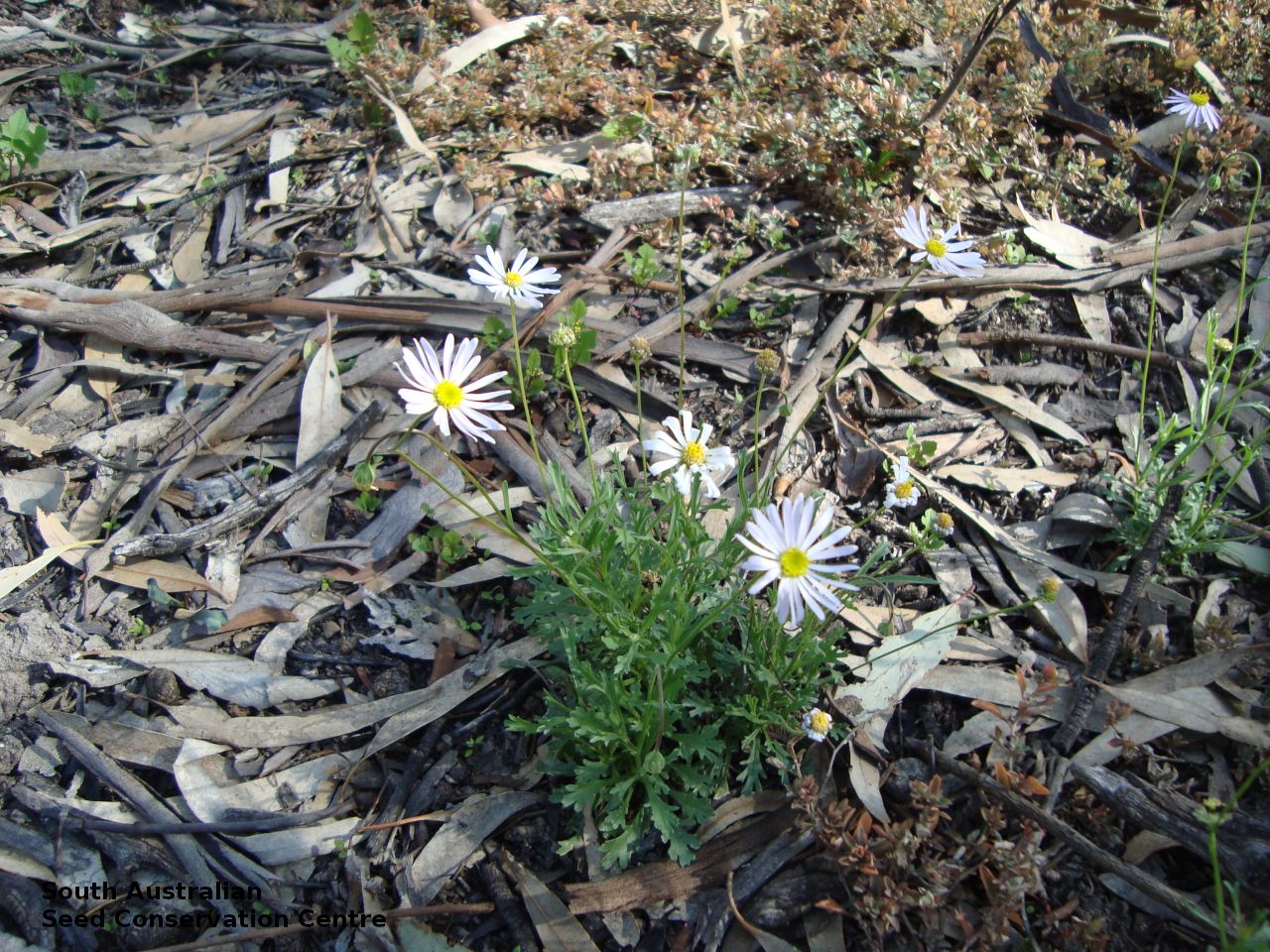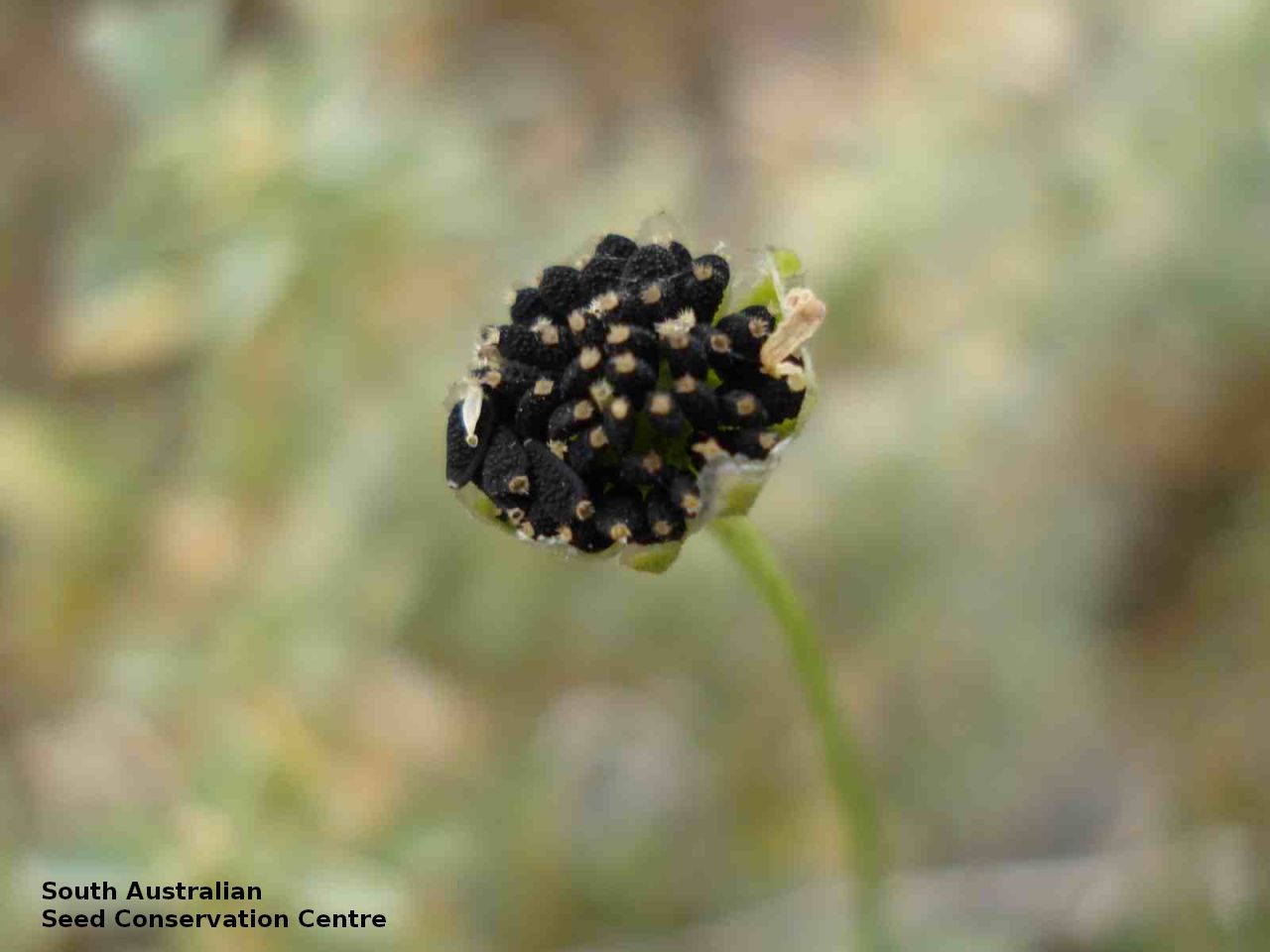










Botanical art
Prior names
Brachyscome melanocarpa
Brachycome melanocarpa
Common names
Black-seed Daisy
Black-fruit Daisy
Black-seed Dasiy
Etymology
Brachyscome from the Greek 'brachys' meaning short and 'kome' meaning hair; referring to the short bristles or hairs of the pappus. Melanocarpa from the Greek 'melanos' meaning black and 'carpos' meaning fruit; referring to the colour of the fruit.
Distribution and status
Found along the Murray River north of Blanchetown and Lake Eyre region in South Australia, growing on heavy clay soils subject to winter flooding. Also found in Queensland, New South Wales and Victoria. Native. Rare in South Australia. Rare in Victoria. Common in the other states.
Herbarium regions: Lake Eyre, Murray
AVH map: SA distribution map (external link)
Plant description
Perennial herb to 45 cm high with erect to ascending, pubescent stems. Basal leaves cuneate to oblanceolate, shallowly lobed, to 7 cm long and 2 cm wide, soon withering. Other leaves narrowly cuneate, irregularly dentate to 5.5 cm long and 1 cm wide, glandular-pubescent. Flowers white to violet daisy appearing between September and October. Fruits are brown daisy heads. Seeds are black ovoid seed to 2 mm long and 1 mm wide, covered with warts. Seed embryo type is spatulate fully developed.
Seed collection and propagation
Collect seeds between September and December. Pick heads that are maturing, drying off, with brown seeds that dislodge easily. Place the seed-heads in a tray and leave to dry for a week. Then gently rub the heads by hand to dislodge the seeds. Use a sieve to separate the unwanted material. Store the seeds with a desiccant such as dried silica beads or dry rice, in an air tight container in a cool and dry place.
| Location | No. of seeds (weight grams) | Number of plants | Date collected | Collection number Collection location | Date stored | % Viability | Storage temperature |
|---|---|---|---|---|---|---|---|
| BGA | 14,900 (2.88 g) | 100+ | 23-Apr-2011 | DJD2180 Murray | 1-Jan-2012 | 88% | +5°C, -18°C |
| BGA | 1,600 (0.33 g) | 40+ | 9-Nov-2011 | DJD2306 Murray | 1-Nov-2012 | 83% | -18°C |
| BGA | 4,200 (0.74 g) | 26-Aug-2011 | DJD2180 Murray | 1-Nov-2012 | 88% | -18°C | |
| BGA | 1,850 (0.39 g) | 40+ | 14-Dec-2011 | MJT370 Murray | 1-Nov-2012 | 82% | -18°C |
Number of plants: This is the number of plants from which the seeds were collected.
Collection location: The Herbarium of South Australia's region name.
% Viability: Percentage of filled healthy seeds determined by a cut test or x-ray.